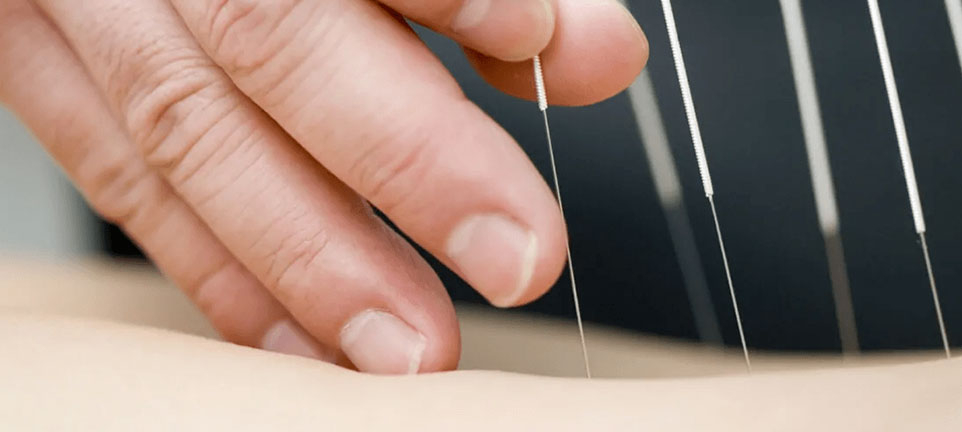
-
Free Parking Available
-
Wheelchair Access
-
Close to Public Transport


Dry needling can relieve a range of musculoskeletal problems through the insertion of needles into taut and contracted muscles, or trigger points, with the aim of restoring their proper functions. It is relaxing and therapeutic procedure that can form part of an ongoing programme of osteopathic treatment, and is suitable for conditions such as back and neck pain, sporting injuries, and discomfort caused by poor posture.
There is a wide range of acute and chronic orthopedic and musculoskeletal conditions that can be treated through the use of dry needling, often in conjunction with an ongoing course of osteopathic treatment.
Dry needling seeks to relieve the pain caused by musculoskeletal dysfunction through relaxing muscle trigger points — these are taut bands that develop within a muscle that can occur in cases of both acute and chronic pain. Trigger points may develop in a muscle as a result of stresses such as poor posture, repetitive actions, or emotional trauma, and can refer pain and create dysfunction in other parts of the body, including severe headaches.
The process of dry needling involves a solid filament needle being gently inserted into the painful part of the muscle (the trigger point) so as to relax or release it, with the aim of permanently reducing the associated pain and discomfort and restoring the imbalances caused by the muscle feeling taut and contracted.
Inserting a needle into the trigger point creates what is known as a twitch response — a feeling that is not dissimilar to a cramp — which means that the muscle is having a healing response to the stimulus and the chemical imbalance that created the trigger point in the muscle is being rectified. This then leads to a decrease in tension, enabling the muscle’s normal functions to be resumed.
Despite the superficial similarities, there are differences in both method and approach between dry needling and traditional Chinese acupuncture. In dry needling, the needles are slowly inserted into the body, gently manipulated, and then removed after a very short period, a process which may be repeated several times. This is unlike acupuncture, where it may be the case that needles are left in the body for some time. Additionally, dry needling is more directly concerned with treating specific neuromuscular problems that are causing pain or hindering mobility; acupuncture, generally speaking, seeks to address the flow of energy around the body and vital organs by inserting needles in established meridian points on the body.
Dry needling is a very safe and relaxing process. In some cases, a needle being inserted into a trigger point muscle can create a slight ache, but there is no sharp or excessive pain, and indeed many patients do not feel the needles being inserted at all. There are no sensations such as you might feel if you accidentally prick your finger, for instance. After a dry needling session, it may be that patients feel a little tired, as after a rigorous exercise session, but there are no lingering effects and most people are able to continue with their day (including playing sports) as normal.
Many patients respond positively to dry needling almost at once, finding that the problem muscles are less taut and contracted, and that they are able to move with more freedom; in some cases, it may take a day or two for the benefits to be felt. Generally speaking, several sessions of dry needling will be required for a lasting benefit to be felt and for the muscle fully to resume functioning normally again. This is because trigger points are often located under deep layers of muscle and so it takes several sessions for the changes in the muscle to take full effect.
Dry needling is therefore a very effective means of addressing a wide range of acute and chronic conditions that cause pain or hinder mobility, and is suitable for treating a number of musculoskeletal dysfunctions, such as: back and neck pain; hamstring problems; headaches; muscular tightness; shin splints; and sporting injuries.





